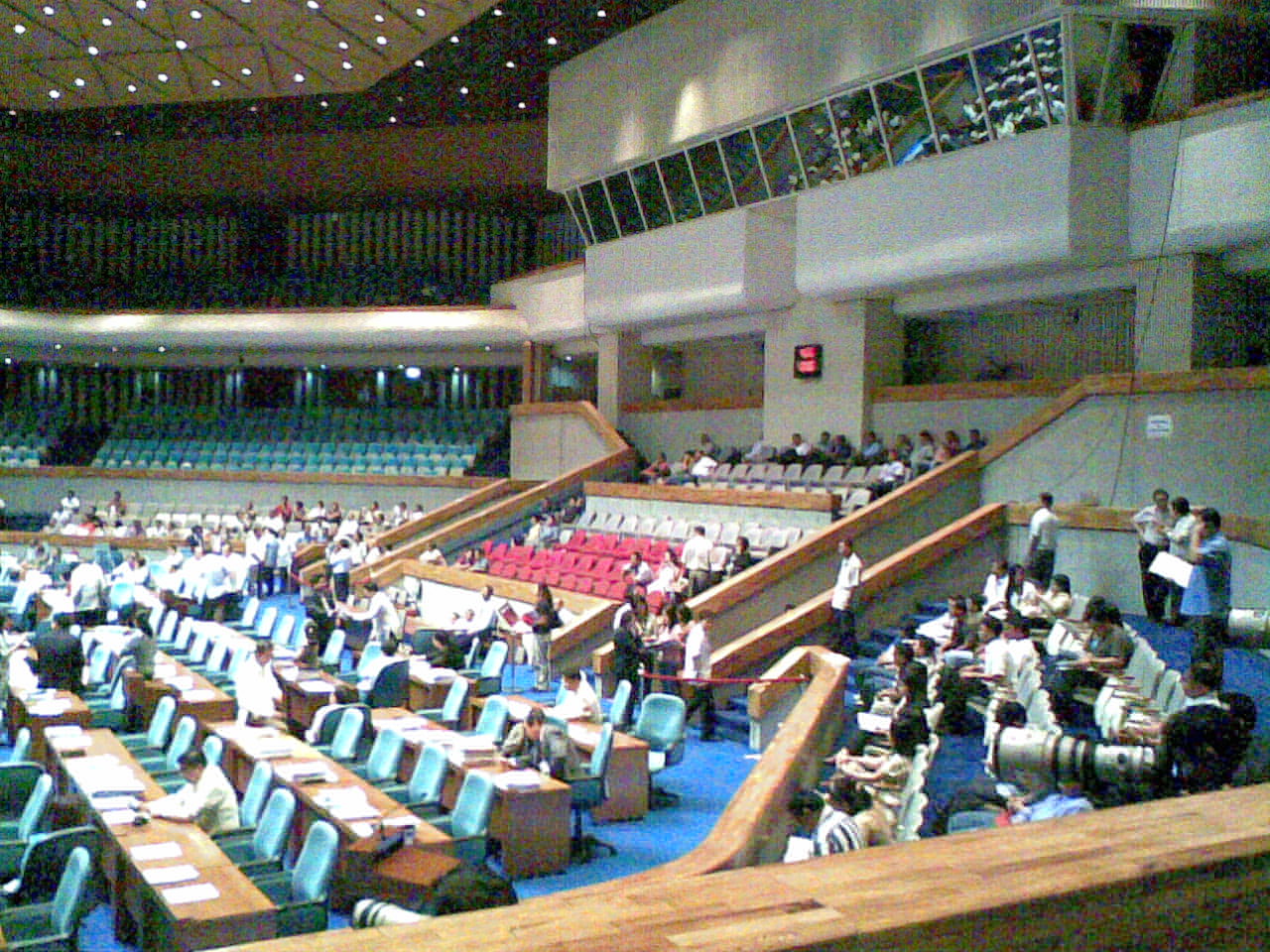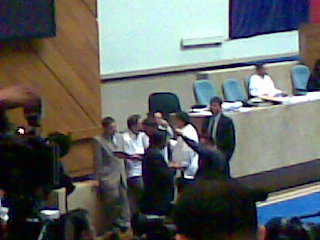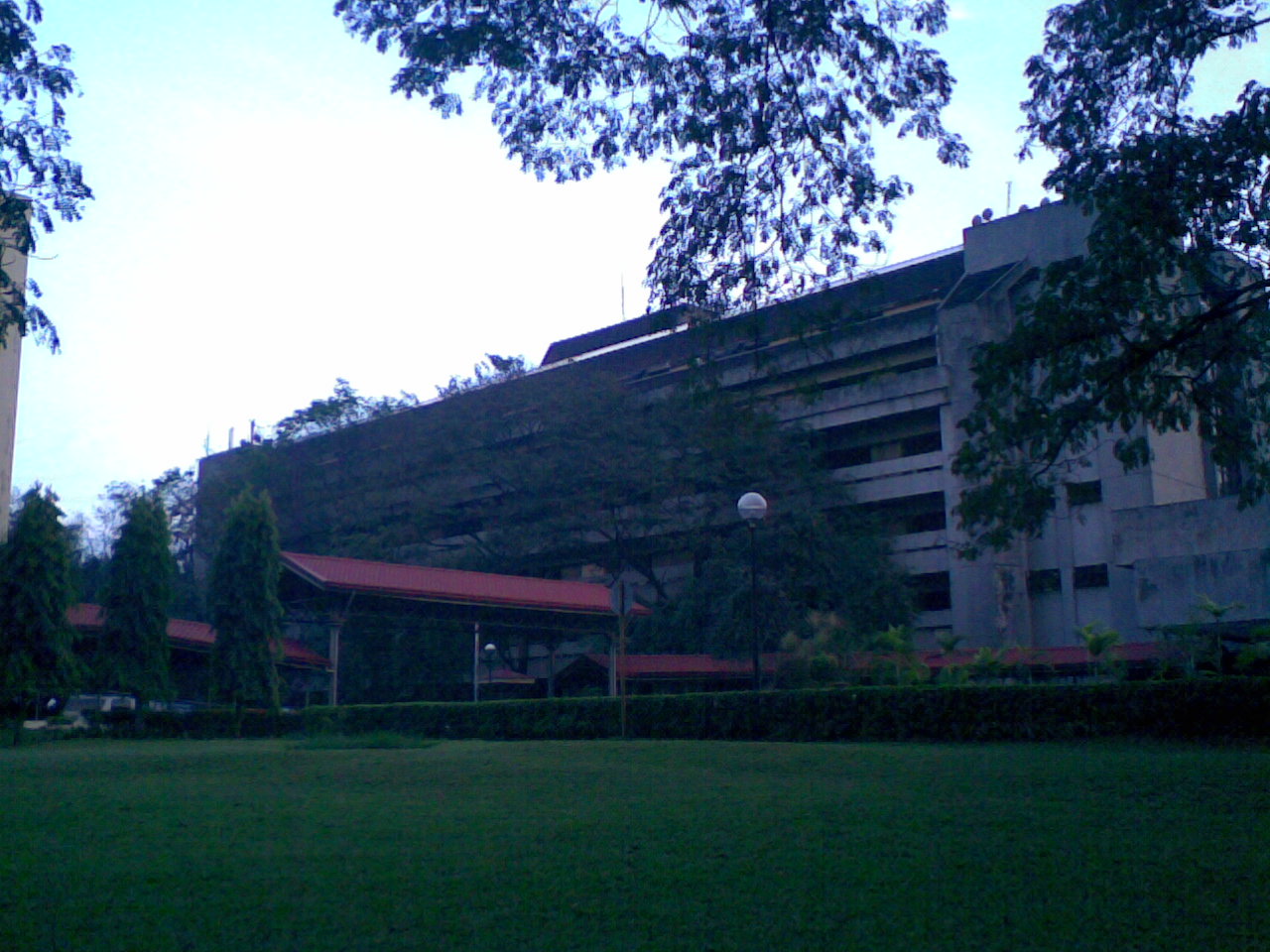






|
|
A Century's Worth
Some photos from my flickr account   |
March 29, 2008 A Century's Worth: UP through years of education, struggle and making history Songs of Hope and Pride Festivities. People full of life. Cheers. All these mark every celebration, whether a simple birthday party or a grand ball. And of course, a celebration is barely complete without music. As UP reaches its 100th year, two songs have been written in line with its celebration, the pop-rock UP Ang Galing Mo, which was played countless times during the Centennial Kickoff last Jan. 8 at the UP Diliman campus, and Isang Daan, written by a student from UP Los Baños and which won in a songwriting competition there. Both songs had their share of comments, whether good or otherwise. But who are the people behind these songs? And how were these songs composed in the first place? UP Ang Galing Mo UP Ang Galing Mo was composed by Herbert Rosales, an alumnus from the College of Engineering in UP Diliman. He was a geodetic engineering major batch ’67, and used to work in an advertising firm. He had written advertising jingles for Pizza Hut and Surf, among others. Rosales said he was tapped by one of his brods in Tau Alpha fraternity to write a song for UP’s centennial. “They know that I’ve been writing songs ever since. I was requested by some of the brods that I may be interested in writing a song for the UP Centennial,” Rosales said. “It was an honor and a privilege to do that.” Rosales said although UP has produced many talents, timing was “very tight” and that the song for UP’s Centennial was needed as soon as possible. “They needed something fast. And they know I can do things fast because I’m used to doing songs. I’m used to doing jingles. I’m used to doing advertising work,” Rosales said. He said he was told to write a song in December 2007. The centennial kickoff was on Jan. 8, 2008. “The song came as an afterthought. We felt we should have some kind of a rousing song to enlighten and put a rhythm or a beat to the celebration. We were looking [for] a song which would somehow be very, very positive in the message and which will resurrect pride of alumni, students, professors, activists in having stayed in UP,” Rosales said. “I’ll do the song. I’ll work out the lyrics, the music. And then, I’ll get the talents to do it, and then, tayo na lang bahala sa expenses with the studio. You do not have to pay me,” Rosales told the UPAA. Rosales said he proposed that the song be rock to cater to the young people. “I was thinking that to get the appeal of the young generations. However, it’s got to also strike some chords with the adults and the alumni who are very, very old,” he said. Rosales said the aim of the song is simple. “Giving UP what it’s due, thanking UP, and then, promoting UP as an institution of which has helped a lot of people, helped the country and so on and so forth, and let the lyrics somehow suggest this,” he said. After the lyrics has been written, the next thing to do was to make the melody. “I was looking for a popular band to do it, especially a band who used to be from UP,” Rosales said. “In fact, I was [considering] Eraserheads. Kaya lang watak-watak na sila.” He added that he also considered Kamikazee and 6 Cycle Mind to sing the song, but they were not available as it was Christmas season. “As a last resort, I tapped one of my brods, Sonny Reyes, (an enterprising businessman and manages two groups),” Rosales said. According to Rosales, one of the groups Reyes manages is composed of young guys who play rock music. The other group, he said, is composed of members of the praise ministry of the Couples for Christ in their district. Rosales said he and Reyes chose five members from the two groups to form a band to sing UP Ang Galing Mo. Rosales worked on UP Ang Galing Mo on a short time frame. “In one sitting, nabuo namin ang magiging takbo ng kanta,” Rosales said. That was on Dec. 29, 2007. “We got the go to make the song sometime Dec. 18 or 19 [2007],” he said. “It was almost Christmas time already.” “I got the guys around after Christmas, about [Dec.] 27. We sat down Dec. 29 to more or less work out the arrangement and how our instruments would go. Then, Jan. 2, we recorded,” Rosales said. Almost the whole day of Jan. 2, 2008 – from 8 a.m. to 4 p.m. – was devoted to recording UP Ang Galing Mo, Rosales said. Then, right after it was recorded, Rosales rushed to UP just in time for the meeting of the UPAA. He played the CD, and the alumni present liked the song, Rosales said. “I was elated [because] they liked how the song turned out,” he said. Rosales said he was not paid to do write the song, but the UPAA shouldered the expenses for the rental of the studio and transportation expenses that were incurred during the making of the song, which amounted to less than 50,000 pesos. Isang Daan Meanwhile, in UP Los Baños, a music fest, or a songwriting competition, was held to choose a centennial theme song. “Sinuggest siya ni Chancellor David (who?),” said Angelica Dayao, a senior Communication Arts student from UP Los Baños who composed the winning entry, Isang Daan, in the music fest which was held on Sept. 27, 2007 in UP Los Baños. Sixty percent of the total scores of entries were already pre-judged, Dayao said. The remaining 40 percent were based on the performance on the finals night. “Gusto niya magkaroon ng Centennial theme song ang UPLB,” Dayao said. “Lahat ng Centennial-related activities, systemwide or UPLB Centennial lang, gusto niya may theme song.” At first, Dayao said she was not really interested in joining the competition. She said she was even “disheartened” at first because she once proposed a Centennial songwriting competition for an arts organization, where she is a member of, that is based in the Department of Communication Arts in UPLB. “Unfortunately, walang budget. Di masyadong nabigyang-pansin yung proposal na ginawa ko,” Dayao said. She only became interested in joining the competition around two weeks before the deadline. “Ako yung pinakahuling nag-submit ng entry,” Dayao said. Dayao said one of her professors, Prof. Dukka, invited her to join the songwriting competition. Dukka is the director of the play they are currently producing as of this writing. Dayao said she usually makes the music for most of the plays which Dukka has directed. “Nung ininvite niya ‘ko na sumaili, medyo may pagtanggi, pero di ‘ko rin matangghian kasi parang boss ko [siya],” Dayao said. Dayao shared that most of the songs that she composed are for theater. “Nagco-compose din ako ng songs na pang-banda, pang-solos,” she added. How was she able to compose Isang Daan? Dayao said she composed the melody first before the lyrics of the song because her mind works better in music and harmony. Then, a lot of people helped her in creating the lyrics. “Maraming nagbiday ng ideas. Mostly mga friends from communication arts program. Mga ka-course ko,” she said. This was how she did the lyrics. She wrote down her ideas, mostly one-liners, on a sheet of bond paper. “Ano ba ang masasabi ko sa Centennial ng UP? Bakit ba tayo nagcecelebrate? Ano ba ang nagawa ng university para sa akin as well as doon sa mga taong hindi naman student ng university?” Dayao said, adding that she just kept on writing on her bond paper without following any “structure, form or arrangement.” She then showed her bond paper full of one-liners to her friends. “Nagsulat din sila ng mga one-liner,” she said. “[Pagkatapos] nag-encircle ako nung mga pinaka-nakaantig sa ‘kin,” she added. After that, she started writing the lyrics following a “form,” which she then incorporated into the music she had created before. “Ganoon yung naging proseso ko ng paggawa,” she shared. Dayao’s classmates, Adrian Crisanto and Joana Rica Sena, sung the demo version of Isang Daan. Then, Dayao said she wanted to add more singers so the song would produce an effect that a whole community is singing, so Dayao’s fellow Communication Arts majors, Miguel Encarnacion, Jeanette Soruico and Karlo Guevarra, joined Crisanto and Sena. The five of them performed during the Centennial kickoff last Jan. 8 in UP Diliman. Dayao said she chose the five of them to sing Isang Daan because she thinks they can best invoke the song’s message. “Kasi hindi ko intension na sobrang galling nung mga kakanta… kasi ayokong magkaroon ng impression na mahirap siyang kantahin ng mga tao,” Dayao said. “[Yung] tamang galing lang na pwedeng gayahin ng kahit sino.” She also said that the idea of a theme song is that it should be sung by many that’s why it should be easy to sing. Dayao said her “philosophy” in making the melody is that it should be easy to recall and that the song need not have high-belting notes. “Yung tama lang,” Dayao said. Critique According to Ramon Maria G. Acoymo, Ph.D, dean of the College of Music in UP Diliman, Rosales’ UP Ang Galing Mo and Dayao’s Isang Daan are “typically youngish” songs. “I think the fact that they’re forthright and they’re honest, they’re simple, makes it very accessible to certain niche of the listening market. And for me, [for] both songs, the niche really is college students or I think very young professionals that happen to like pop rockish, folkish three- to four-minute songs,” Acoymo said. The lyrics of UP Ang Galing Mo, according to Acoymo, are “effective in a sense [that] they seem to suggest hope and pride for our institution.” “If that’s what we want to believe in, I think it’s pretty clear [that] the lyrics deliver them,” Acoymo said. Likewise, Acoymo said the lyrics of Isang Daan also suggest hope and pride for UP. However, whether one is better than the other cannot be determined because the two songs “accomplish different things.” “[UP Ang Galing Mo] revves you up. [Isang Daan] is a little more introspective,” Acoymo said. Acoymo added, “[The first one] is rawer and more hard-driving because maybe it’s inspiring you to move to greater action. Maybe the second one is mellower because it places more emphasis on introspection and reflection.” Likewise, Acoymo said it’s hard to define what a good pop song is. For instance, UP Ang Galing mo is good in a sense that it was able to say what it wants to say. “But if you compare it to great song compositions of the masters, the harmonic, melodic and rhythmic ingenuity may not be of the same level. But it doesn’t strive to be that way. Within what it strives to be, it has a potential to be effective,” Acoymo said. Acoymo also said UP Ang Galing Mo is apt for UP’s Centennial “for a certain market.” “It may be limited to that young market which appreciates alternative pop rock [type] of songs. So it may be appropriate in a sense that it’s singable and listenable and recallable by a certain segment of the young UP population,” Acoymo said. The same is true for Isang Daan. “It may not be very listenable to or something older people might enjoy. It’s not one to drive to a frenzy of, shall we say, vision or inspiration,” he said. Acoymo added that “majesty” is one word he would like a centennial song to have. “What I would look for in a centennial song are qualities that are more akin to majesty, to scope, to breadth, to sublimity,” Acoymo said. “Something that moves your heard to lofty inspirations. It has to be majestic to encapsulate, to reflect and to embody 100 years of great achievement,” he added. An example he gave is UP Naming Mahal by Nicanor Abelardo and Bayan Ko. “Maybe the Freddie Aguilar version [of Bayan Ko] would be like folk rock. But the composition itself, I think it’s majestic. It is sublime. And whether a teenager sings it or Cory Aquino sings it, it is just as powerful,” Acoymo said. «Prev 1 2 3 4 5 6 7 8 9 10 Next» |
| Contact me: Hannah Joy Castillo |

|
Home · About · Articles · Links · Site Map |